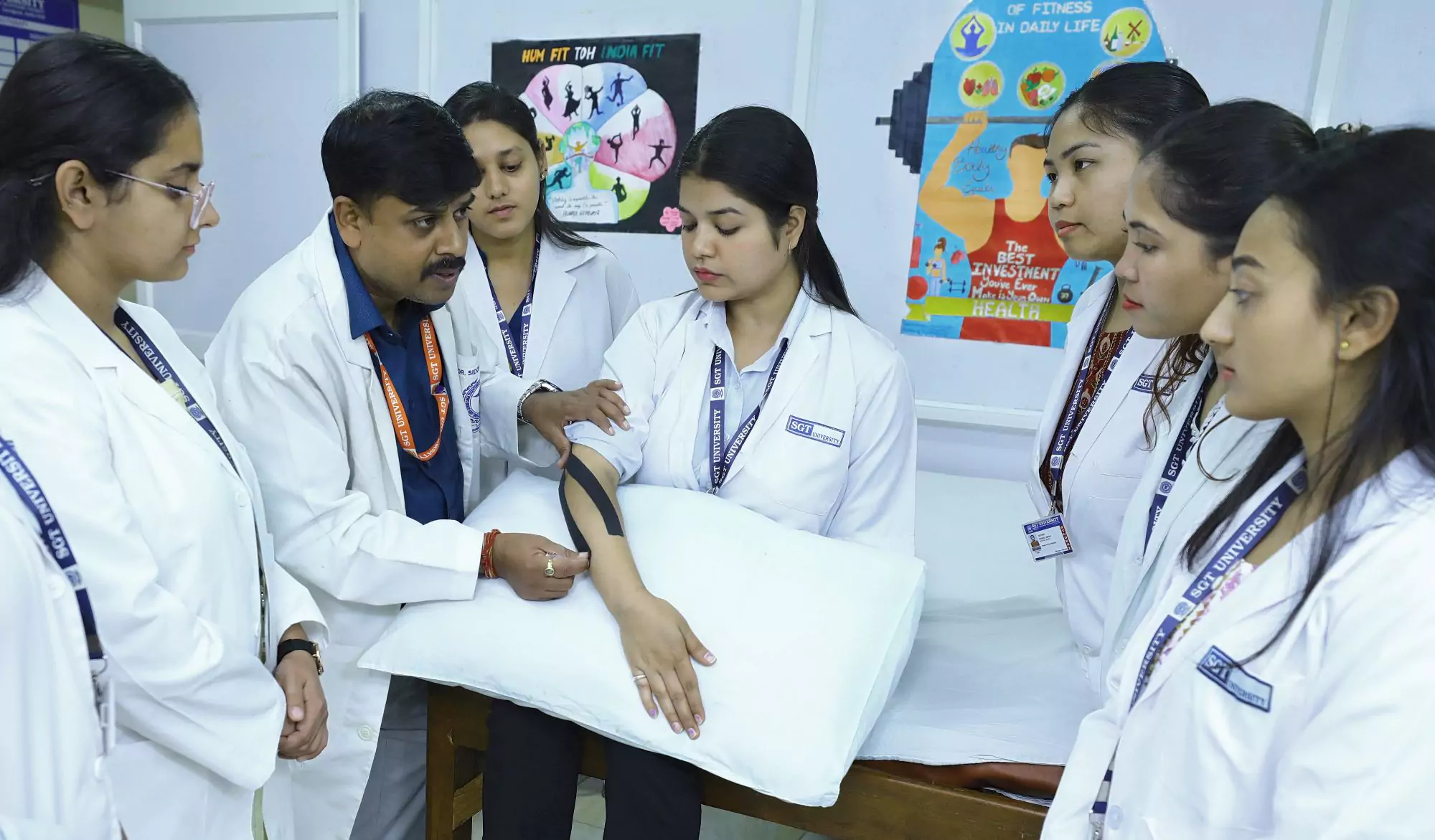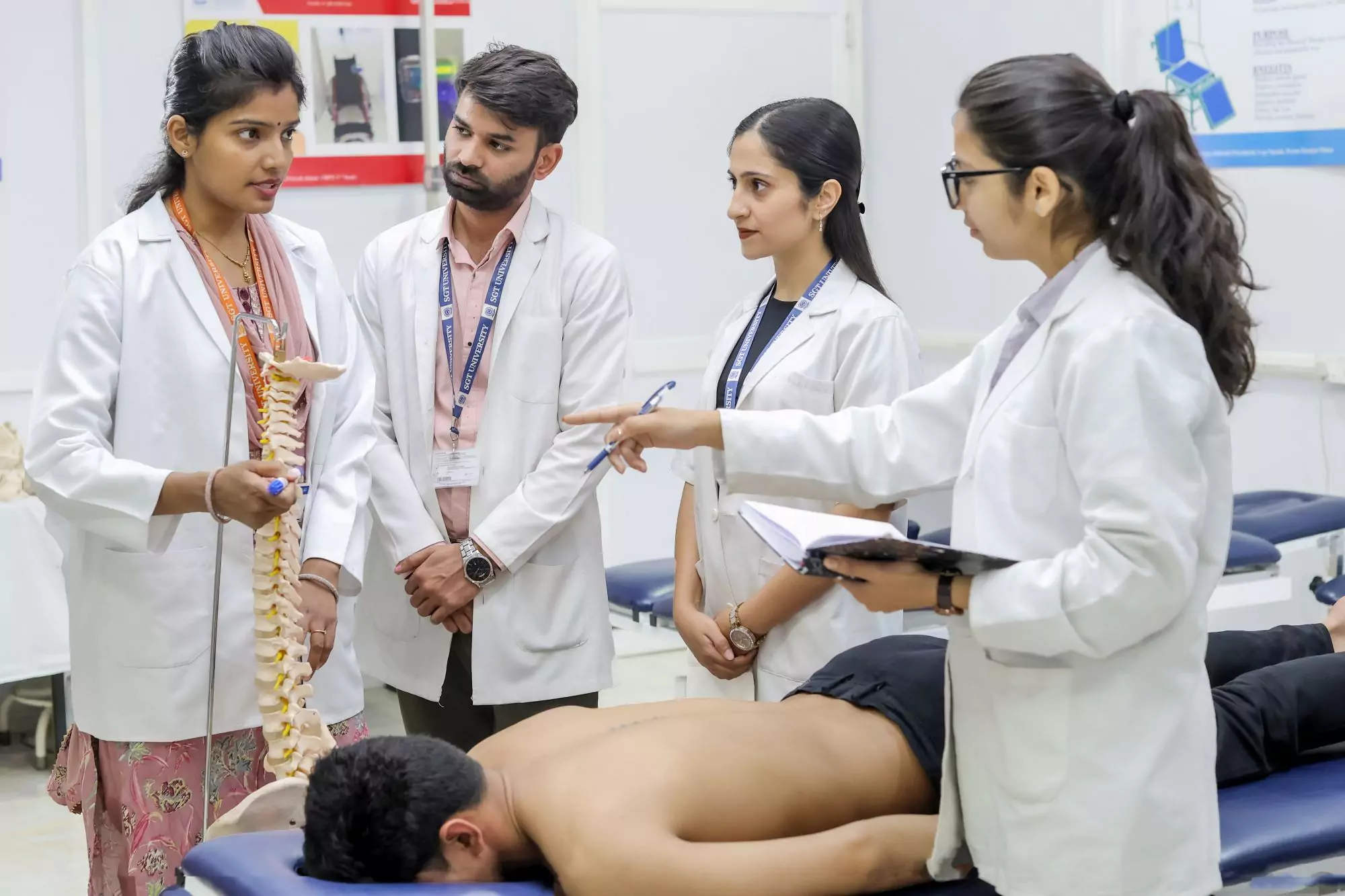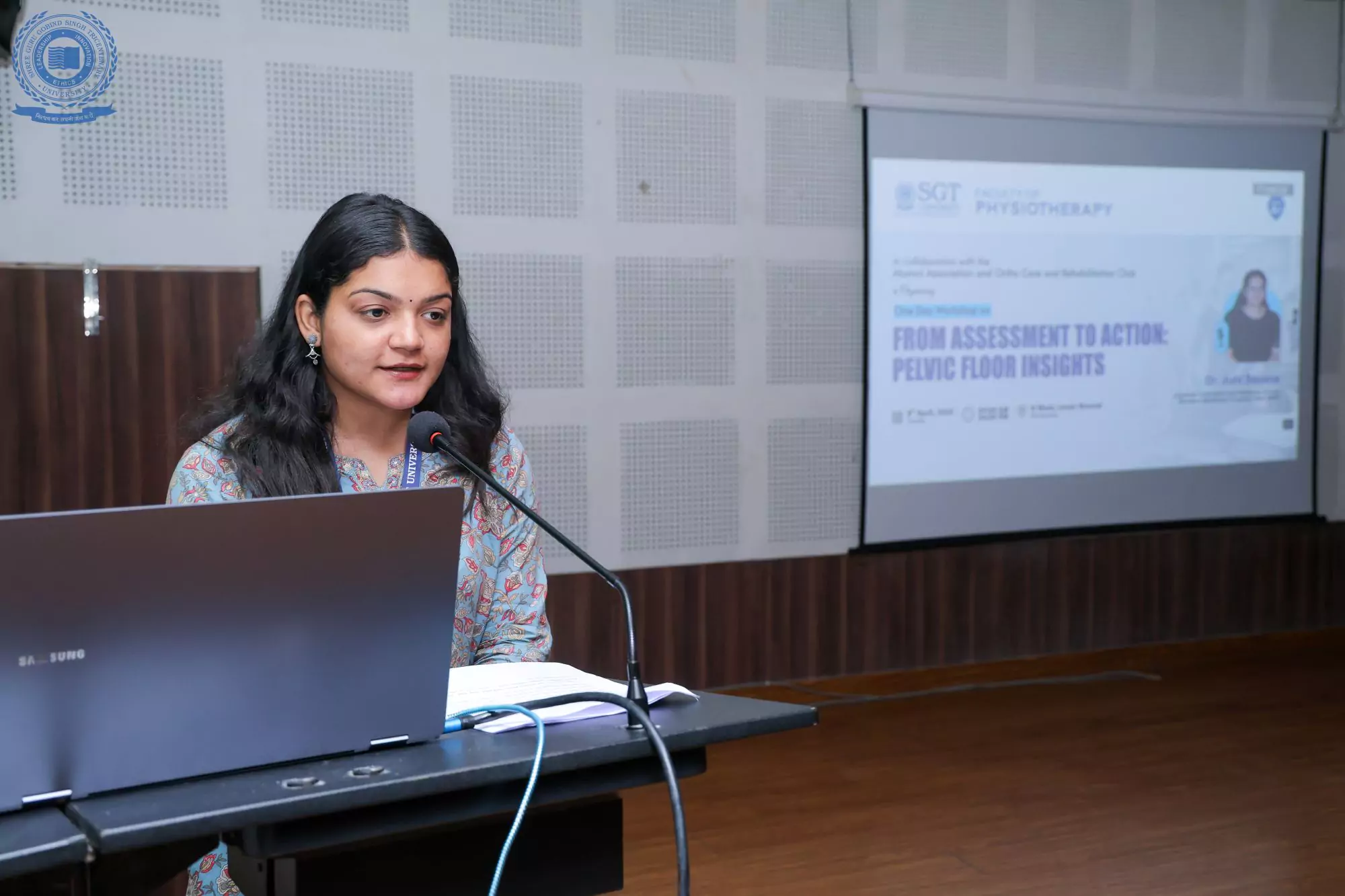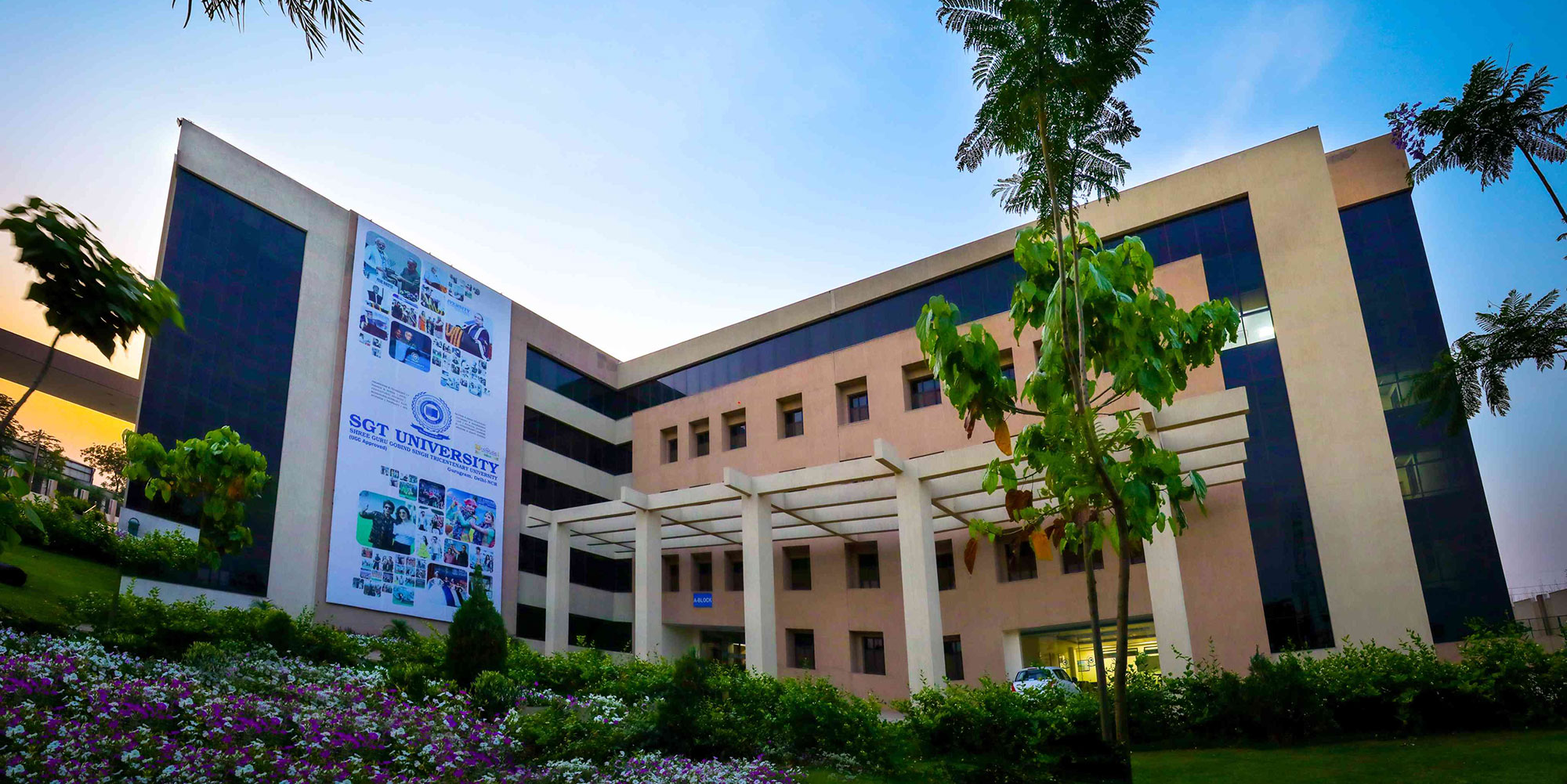
Department of
Orthopaedics Physiotherapy
The Department of Orthopaedics Physiotherapy at SGT University is a
centre of excellence focused on the prevention,
assessment, and rehabilitation of musculoskeletal and orthopaedic conditions. The department
offers a dynamic and
integrated curriculum that balances scientific knowledge, clinical skills, and practical
application.
The department strives to develop physiotherapists with strong clinical acumen, research
aptitude, and ethical
integrity, who can deliver optimal care across all age groups experiencing orthopaedic
disorders.
Students are trained in state-of-the-art labs with advanced diagnostic and therapeutic
tools, including manual therapy
equipment, biomechanics software, and strength assessment technologies. Emphasis is placed
on evidence-based practice,
multidisciplinary collaboration, and patient-centric rehabilitation planning.
The
department emphasizes simulation-based learning using standardized patient scenarios,
virtual anatomy tools, joint
mobilization models, and injury simulation cases to train students in real-world clinical
decision-making. Students are
immersed in a variety of learning methodologies, including flipped classrooms, problem-based
learning (PBL), case-based
learning, peer-teaching sessions, and inter-professional education.
The department
emphasizes hands-on clinical training in the rehabilitation of conditions such as fractures,
ligament
injuries, post-operative joint replacements, spinal dysfunctions, sports injuries, and
age-related musculoskeletal
disorders. Training is conducted in well-equipped musculoskeletal rehabilitation labs and
outpatient clinics, guided by
expert faculty.

- Department Objectives:
- To deliver evidence-based, competency-driven education in orthopaedic physiotherapy aligned with national and international standards.
- To enhance clinical reasoning and diagnostic abilities using advanced simulation tools and manual therapy models.
- To promote experiential learning through interdisciplinary clinical postings, community rehabilitation drives, and sports injury camps.
- To train students in the rehabilitation of diverse musculoskeletal conditions including fractures, post-arthroplasty recovery, spine dysfunctions, and tendinopathies.
- To integrate technology-driven pedagogies such as virtual case walkthroughs, video-based feedback, and motion analysis for applied biomechanics.
- To develop leadership and research skills in areas such as chronic pain, ergonomics, orthotic applications, and functional restoration.
- To foster lifelong learning and global readiness through academic collaborations and professionaldevelopment programs.


